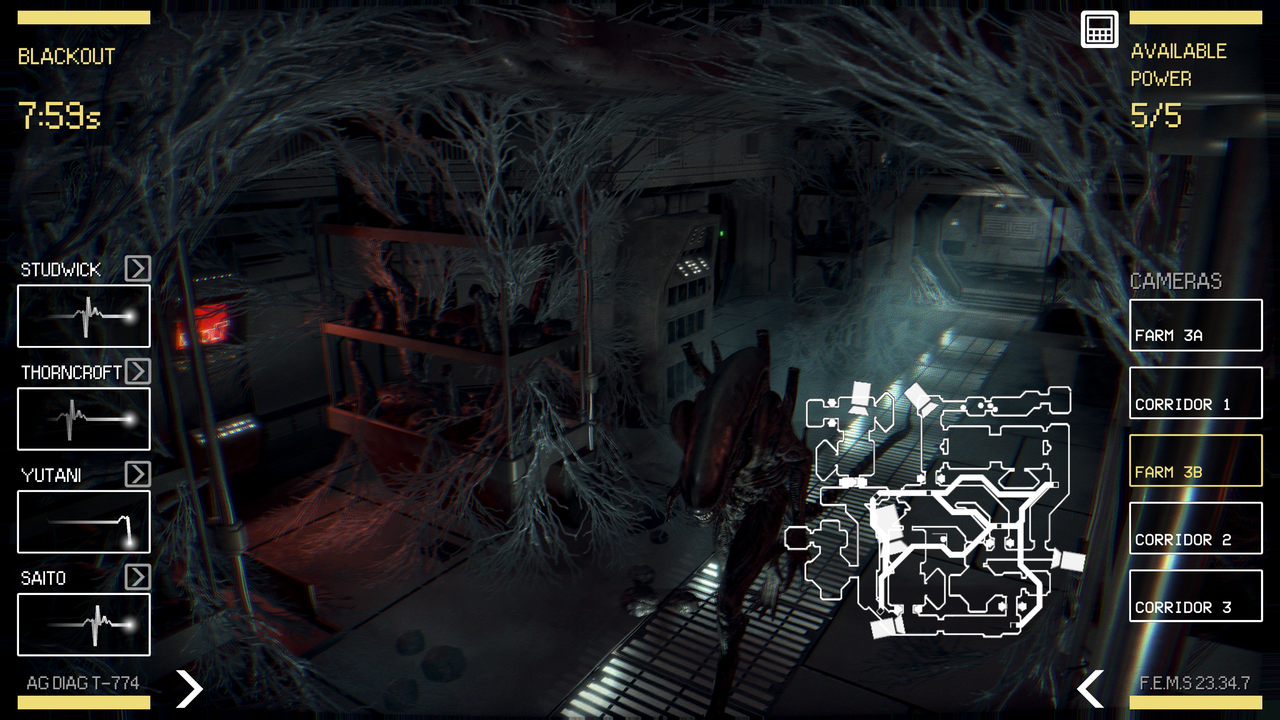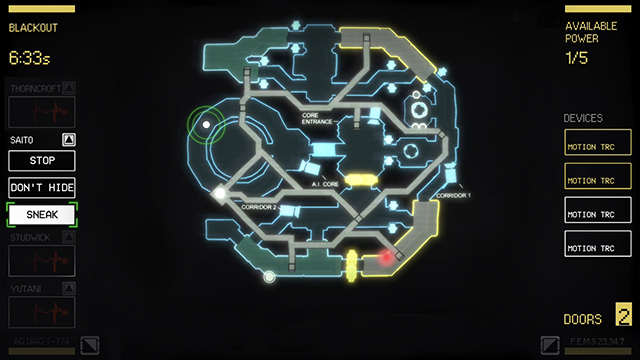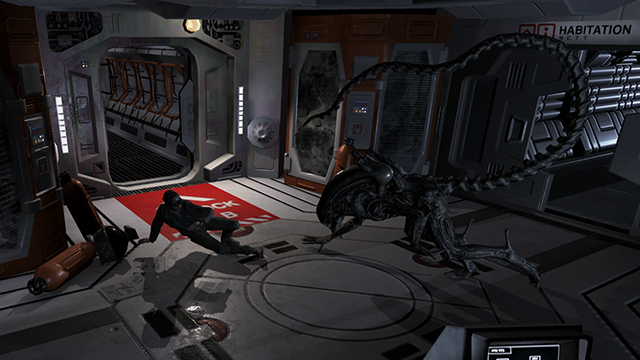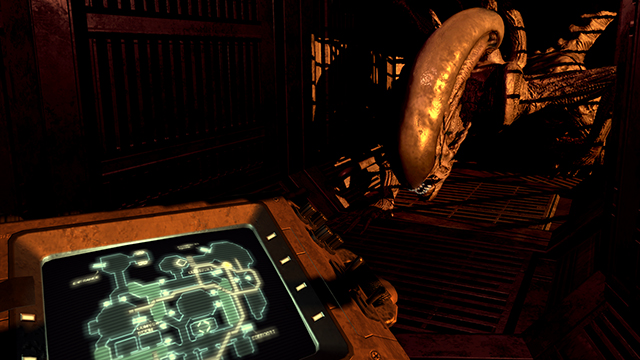Mobile games in popular franchises are usually magnets for ire. Diablo Immortal shook the internet at BlizzCon 2018 and the fury surrounding Alien Blackout felt like an outrage aftershock from the same quake. It cribs the Amanda Ripley from Alien Isolation but places her behind a security monitor instead of a half-filled flamethrower and faulty motion tracker. Despite its alternate setup, Alien Blackout seems to be a small, thoughtful experiment that works well with the strengths and limits of its platform.
Blackout takes this notion to heart by basing its premise on those platforms. Touchscreens are a natural fit for protagonist Ripley’s computer monitor that controls doors, cameras, and motion trackers on the doomed spaceship. Players must use these tools to guide helpless alien bait survivors through the vessel while also keeping the xenomorph from sticking its tongue down any of their throats. Essentially, you’re playing as a chaperone at a junior high dance but with slightly less blood.
Mobile spin-offs often benefit from experiences designed for the platform and that’s exactly what Blackout’s controls seem to do. The interface is literally a computer screen which means it translates well to the touchscreen. Tapping cameras or motion trackers on the map allows you easily choose when they activate or deactivate. NPC humans are a bit more complicated since they can either take specific pathways you draw for them or be ordered to run or hide. It’s a unique course for the series but was actually born from the most recent Alien film.
“I was watching Alien Covenant and was at part at the end where David is controlling the doors through the cameras [on the ship] and thought it would be a fun experience on the mobile platform,” says Josh Austin, senior producer at D3 Go. “The whole idea of clicking on the different cameras and leading the alien in different places is where that comes from.”
Alien Blackout preview – A deadly game of hide and seek

The alien is always lurking about the ship and you’ll have to be constantly switching between the cameras and motion tracker to pinpoint its location so you can safely guide each member of your crew as they split up. Its intuitive controls not only directly connect you to Ripley, but are also essential for facilitating the fast, plate-spinning gameplay of Blackout. The touchscreen allows instant access to each of the systems and that precision under this sort of duress is essential. Fiddling with unwieldy controls would spoil the tension and make the game stressful in a bad way.
And it’s already stressful enough as it is because of how vulnerable you and your team are. Each level felt like it was on the cusp of turning into just about any scene in Alien where someone gets got — sans an adorable orange bastard of a cat. The beast’s dynamic AI ensures that it doesn’t act predictably and trying to outsmart it is where the game begins to kick into gear.
Opening and closing doors can help shield your allies but it’s also loud enough to attract attention, which you can use as a distraction. Activating your motion tracker in specific hallways can track the beast, given you have enough power to keep the sensor on. Drawing paths for your crew is more direct but opens you up to attack since the alien will hear you give the orders and follow the sound of Ripley’s voice. This is signaled by a loud cacophony of clangs and bangs as it stampedes through the vents to try to strangle you. It’s an exhilarating way to keep you on your toes and ensure that you’re paying attention to the sparse, but haunting audio design.
Although the possibility of not reaching its full potential is similarly haunting. Its solid systems deserve stages that constantly layer on new mechanics and it’s not evident that Blackout will hit that mark. It’s only seven levels (three of which I played), which makes sense for its modest $4.99 price point, but doesn’t quite sound like it will be able to properly unfold into something bigger. Giving the player an onslaught of new toys to play with and possibly even adding multiple different threats seems geared towards a game like this. Twisting around the mechanics to their fullest potential and adding plenty of new scenarios in just seven levels just doesn’t seem possible.
Alien Blackout preview – The perfect organism

But even these handful of tools mean juggling everything is pretty difficult since the game doesn’t give you a full rundown of each nook and cranny of the ship. Not every hallway has a camera or motion sensor, after all. And if you’re not constantly searching around the ship, someone is going to die. Austin explains that this was an intentional choice by the designers to ensure that it was appropriately hard and the alien was an overpowered asshole even if it causes some people to drop off.
“It’s a hard game,” he admits. “But what’s great about it is it’s a good experience for the license. We had a couple points where they thought we should make it a little easier and I said no and we had to keep it hard. It’s an unpredictable monster and you have no weapons. We really wanted to capture that first Alien movie where you’re a crew of people with no means to kill this thing and it’s just destroying everyone.”
And that alien will destroy you and your crew like it was its damn day job. Similar to Alien Isolation, its status as the perfect organism means that you won’t stand much of a chance when it actually finds you, which puts all the pressure on planning ahead. It’s a deliberate design choice that seemed punishing in the way that it needs to be. After all, Aliens Colonial Marines’ decision to basically turn the once-deadly xenomorphs into pathetic cannon fodder just didn’t feel right on a fundamental level.
Alien Blackout preview – When death is not always game over, man

Crew members usually roam the ship in packs and can die without sending you back to the title screen. You only need one to complete a mission and the story will continue without that person similar to games like Until Dawn. Characters didn’t seem particularly deep since there’s not much screen time with them, but it adds a layer or organic difficulty since you can aim to save more and more people on each run as you learn to deal with alien’s relentlessness. The surviving cast will even shape the ending and what anecdotes you hear along the way.
Amanda Ripley is the only recognizable face among this crew and is the source of Blackout’s unconventional fit within the universe’s canon. The game takes place between Alien and Aliens but not before Isolation. And since Isolation left off on a cliffhanger, it’s insinuated that it is oddly set some time after that game. It’s place in the timeline is cloudy and won’t satisfy those looking for a answers to where Ripley ended up after Isolation.
However, it’s lack of connective tissue to Alien Isolation shouldn’t be enough to completely throw the game off your motion tracker. On principle, it’s incredibly easy to dismiss Alien Blackout since it’s a mobile game being announced in the absence of a true sequel to Alien Isolation. In practice, it’s a small, creative use of the license that’s built well for the platforms it is on and aesthetically true to its roots. It’s only slightly disappointing when looked through the lens of what it isn’t. When looked at what it actually is, however, it shows that it is worthy of attention and not to be jettisoned out of the airlock.







